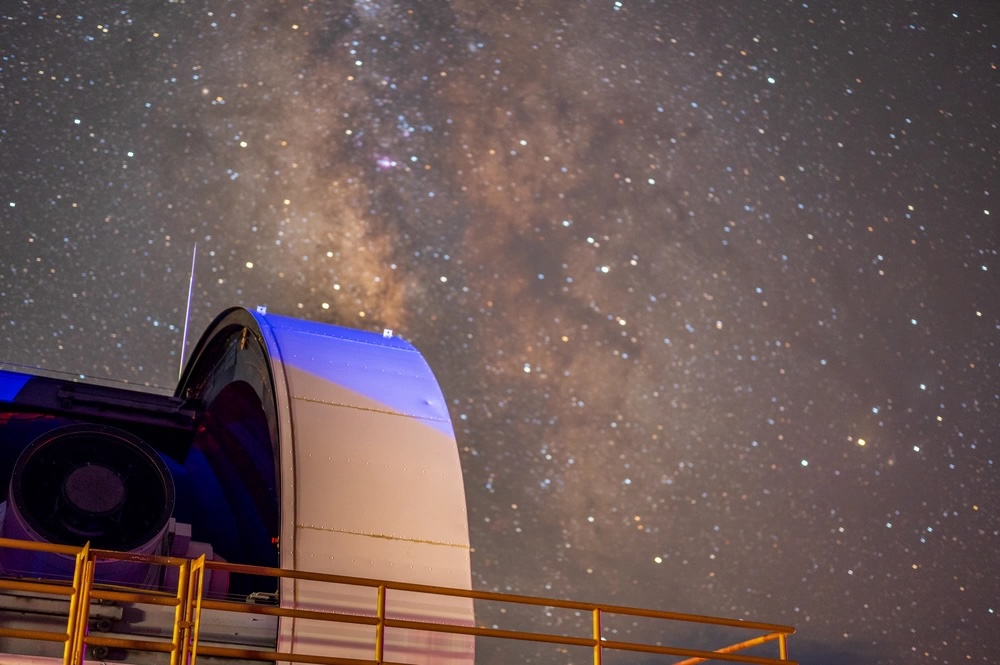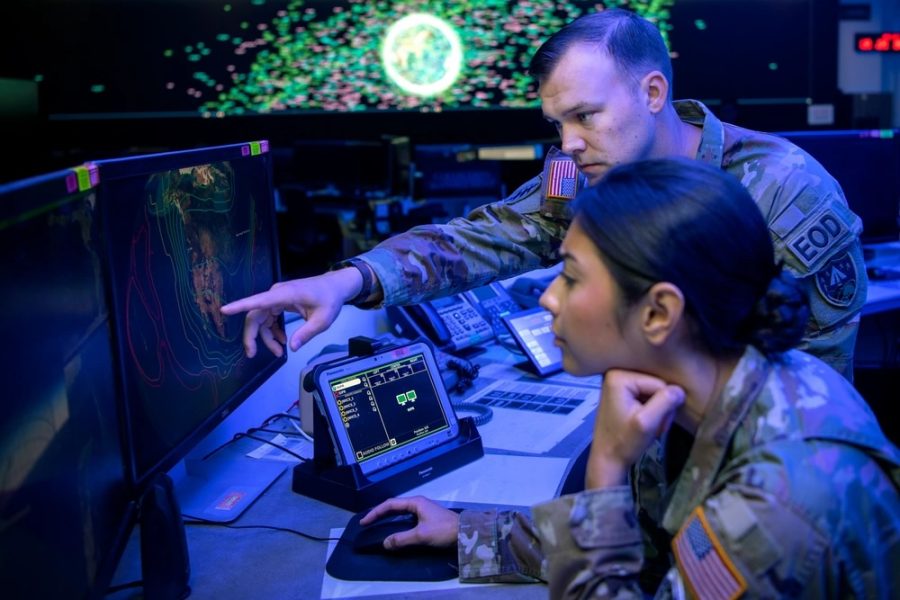There are tens of thousands of manmade objects in space, many of which are moving in low earth orbit at more than 17,000 miles per hour. If any collide, they could disrupt vital communications, navigation, and scientific satellites that millions of people rely on every day. That’s why the Space Force’s 18th Space Defense Squadron (SDS) has its eyes on the sky, tracking objects overhead and identifying possible collision risks so that satellite operators can adjust orbit and avoid a run-in.
“Just like a pileup on a busy racetrack, space debris could collide into other satellites, disrupting critical communication, navigation, and weather forecasting services,” Space Operations Command noted in a recent press release highlighting the squadron. “Acting as the lighthouse of space, 18th SDS is responsible for monitoring and tracking all artificial objects in Earth’s orbit to ensure the safety of our satellites, astronauts, and space exploration endeavors.”
From its headquarters at Vandenberg Space Force Base, Calif., the 18th SDS uses the U.S. Space Surveillance Network (SSN) to track more than 45,000 objects in orbit. The worldwide network includes ground-based sensors such as the Ground-Based Electro-Optical Deep Space Surveillance System, which takes rapid digital photos of the night sky where satellites show up as tiny streaks. Computers then measure the streaks to calculate the satellites’ position, according to the Space Force website.

Other ground-based legs of the SSN include the AN/FPS-85 and AN/FYS-3 Phased Array Radars, which can track hundreds of targets simultaneously; and ‘Space Fence,’ an array system in the Marshall Islands that broadcasts constant bands of energy and tracks objects that pass through it. There are also on-orbit platforms such as the Space-Based Space Surveillance satellite, which can track objects year-round above earthly obstructions such as weather and daylight.
There are several other dedicated, collateral, and auxiliary sensors that make up the SSN, which has to keep pace with an ever-growing number of space objects. The 18th SDS uses data from the SSN to update Space-Track.org, a public catalog of objects in Earth orbit. The 18 SDS also works with its sister squadron, the 19th SDS, to predict where satellites are headed and prevent collisions.
In a crowded place like low Earth orbit, unexpected satellite fragments can ramp up the risk of a disastrous collision. There are four kinds of fragmentation events, the recent press release explained. Anomalous debris-causing events occur when corrosion, fatigue, or similar factors lead to fragments spreading at relatively low speeds close to the original satellite’s orbit. In contrast, breakup events generate large amounts of debris that spread quickly over a wide area.
Breakups can be unintentional, such as when volatile chemicals in a satellite fuel tank explode, or intentional, like when countries launch anti-satellite missile tests that generate thousands of pieces of debris. The debris cloud from a 2021 Russian anti-satellite test still threatens people and satellites in orbit today.
Collisions are a third category of fragmentation event. One example is when a Russian military satellite collided with a commercial Iridium satellite in 2009, generating a large debris cloud and prompting the start of U.S. Space Command’s Space Situational Awareness Sharing Program. The fourth category of event is mission-related, where fragmentation includes a payload deployed from a larger satellite or unintentional separation of non-payload components.

Members of the 18th SDS keep an eye out for changes in orbital parameters, which can indicate if a satellite is releasing gas or undergoing structural stress and can foreshadow possible fragmentation, the press release explained. The Guardians use specialized software to track satellite trajectories or, in the case of fragmentation, figure out where debris came from, what caused it, and where it’s going. The next step is to warn affected satellite operators so they can adjust accordingly.
Despite the 18th SDS’ vast observation and computation abilities, there are still more than a million objects under 10 cm that are too small to track but which can pose a major collision threat in orbit. Maneuvering to avoid collisions uses up fuel and shortens satellite lifespans, but mitigating the threat is a problem that one Space Force squadron alone can’t solve.
Indeed, earlier this year, the research group RAND called for an international space traffic management system (STM) that would help operators better coordinate, communicate, and adjudicate traffic challenges. Today, management of space objects is “an informal, ad hoc, and often ill-coordinated process” that is “approaching a tipping point,” wrote RAND researchers, which noted that more than a dozen major conferences, reports, and papers have called for a STM over the past 40 years.
“Rather than wait for a crisis to catalyze action, the space community should seize the moment and begin the work of building the governance structures needed to ensure the safety and sustainability of critical space assets, services, and activities,” researchers wrote.
Until then, the 18th SDS is hard at work tracking thousands of objects and helping operators “safely navigate the orbital racetrack,” the press release said.
